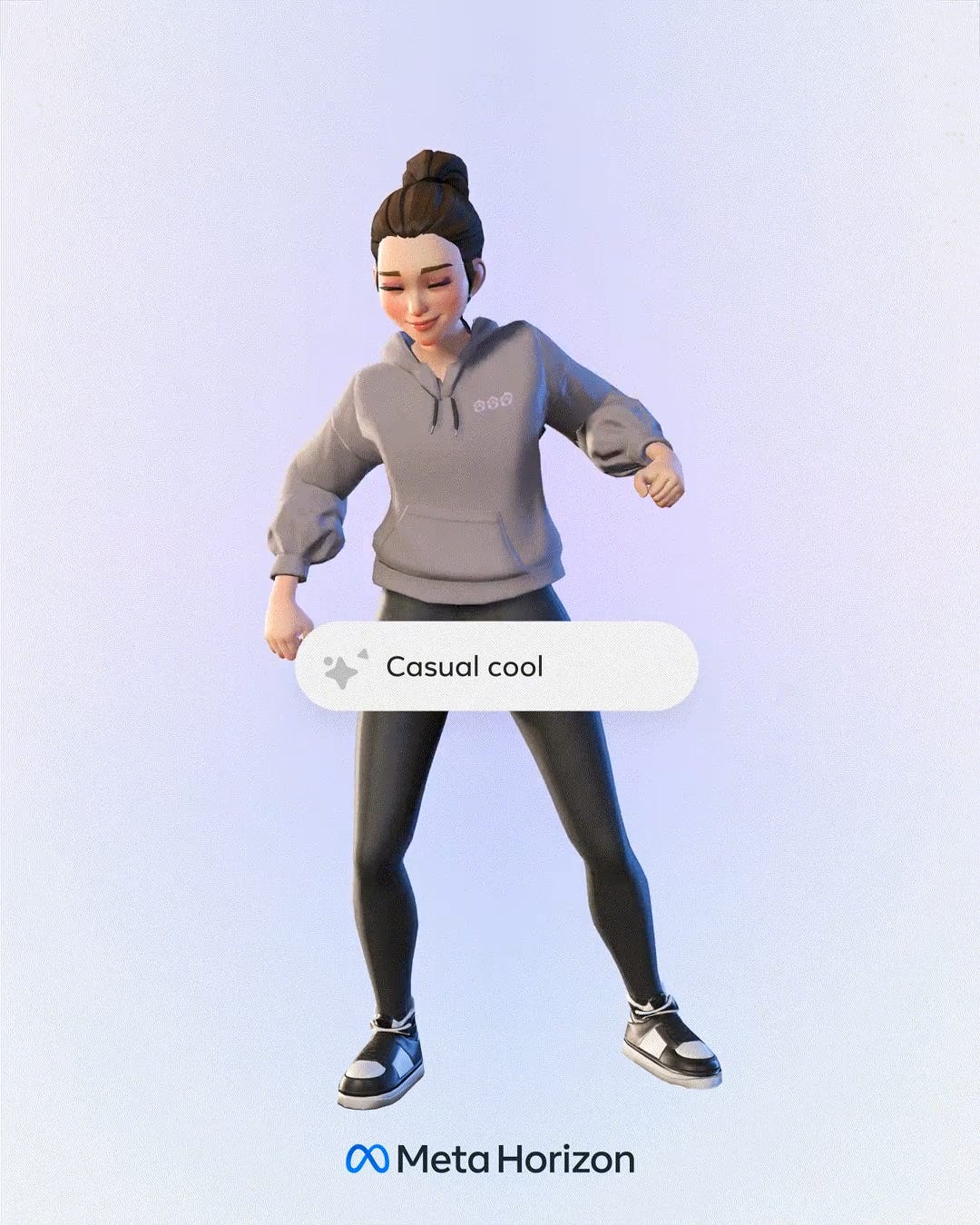Weekly Journal: Humanoid Robots Market Heats Up
[6 min read] Your weekend guide to getting ahead on the digital frontier. With the production increasing and prices coming down, having humanoid robots in your workplace and home isn’t far away.
Welcome to this week’s Weekly Journal 📔, your guide to the latest news & innovation in emerging technology, digital assets, and our exciting path to the Metaverse. This is week 140 of the 520 weeks of newsletters I have committed to, a decade of documenting our physical and digital lives converge. New subscribers are encouraged to check out the history & purpose of this newsletter as well as the archive.
- Ryan
🌐 Digital Assets Market Update
To me, the Metaverse is the convergence of physical & virtual lives. As we work, play and socialise in virtual worlds, we need virtual currencies & assets. These have now reached mainstream finance as a defined asset class:
🔥🗺️Heat map shows the 7 day change in price (red down, green up) and block size is market cap.
🎭 Crypto Fear and Greed Index is an insight into the underlying psychological forces that drives the market’s volatility. Sentiment reveals itself across various channels—from social media activity to Google search trends—and when analysed alongside market data, these signals provide meaningful insight into the prevailing investment climate. The Fear & Greed Index aggregates these inputs, assigning weighted value to each, and distils them into a single, unified score.
🗞️ Metaverse news from this week:
Meta Avatars Level Up With Custom Body Types & AI-Generated Fashion
Meta is rolling out its most significant Avatar update yet, giving users unprecedented control over their digital selves. Across Horizon Worlds, Quest, and Meta’s social platforms, users can now fine-tune everything from shoulder width to bicep size, alongside new facial controls for jawlines, cheek fullness, and depth. The refresh also introduces 18 standing poses, over 50 new emotes, and a diverse wardrobe designed to fit all body types. A new body preview mode makes it easier to experiment with proportions before styling.
Perhaps most intriguing is the debut of an AI-powered outfit generator. Available initially in the Horizon mobile app for users 13+ in the US and Canada, the tool creates clothing designs from text prompts or at random, which can then be refined manually. More features and regional rollouts are expected over time.
Metaverse Lens: By merging deeper physical personalisation with generative AI fashion, Meta is blurring the line between avatar self-expression and digital identity commerce. As avatars become more lifelike and style-aware, expect the metaverse to evolve into a dynamic marketplace where fashion brands, creators, and users co-design wearable culture in real time.
Why Humanoid Robots Still Move Like Robots — And How “Mechanical Intelligence” Could Change Everything
Today’s humanoid robots, from Boston Dynamics’ Atlas to Tesla’s Optimus, look extraordinary — but they share a hidden flaw: rigid, software-dominated bodies that lack natural, adaptive motion. Sony recently acknowledged the problem, noting that limited joints and stiff structures create movements far from their human or animal inspirations.
Current designs rely on AI “brains” to calculate every micro-movement, making them energy-hungry and clumsy in unpredictable environments. A human hand can fold a shirt by feel; Optimus needs perfect visual planning. Boston Dynamics’ Atlas can do acrobatics, but can’t confidently walk across mossy rocks or push through branches.
A new approach, mechanical intelligence (MI), could solve this. Inspired by nature’s “morphological computation,” MI designs embed adaptation into the physical body itself — like a hare’s spring-like tendons or the human hand’s friction-adjusting fingertips. Researchers are experimenting with hybrid joints and compliant structures, enabling robots to save energy and respond passively to their environment.
Metaverse Lens: As robots become physical counterparts to virtual avatars, MI could be the breakthrough that lets embodied AI agents move fluidly in mixed-reality spaces — from home assistants that mirror your digital twin’s gestures to humanoid performers in metaverse concerts. Without it, our future co-workers in the metaverse may remain more “mechanical mannequin” than lifelike collaborator.
👓 Read of the Week: Practical Immortality and the Digital Afterlife
What if death became optional? Futurists like Ray Kurzweil, Ian Pearson, and Aubrey de Grey believe that by 2050, advances in AI, robotics, genetic engineering, and brain–computer interfaces could make 1,000-year lifespans—and even digital consciousness—possible. In this thought-provoking piece, Popular Mechanics explores how “practical immortality” might emerge from nanobot-enhanced bodies and cloud-hosted minds, reshaping not just human health but our presence in the metaverse. Whether as uploaded intelligences roaming virtual worlds or as hybrid bio-digital beings, the question is no longer if technology can extend life—it’s who will get to live forever.
🎥 Watch of the week: Which of these three would you choose?
With the production increasing and prices coming down, having humanoid robots in your workplace and home isn’t far away.
AI Showcase🎨🤖🎵✍🏼: Canada’s AI Classroom Gap Widens
In the Metaverse, AI will be critical for creating intelligent virtual environments and avatars that can understand and respond to users with human-like cognition and natural interactions.
Canadian teachers are eager to embrace AI in the classroom but are being left without the training or unified policies needed to use it effectively. While the US has launched a $23 million program to train 400,000 educators in AI tools, Canada’s approach remains a patchwork—some provinces offer basic guidelines, but most leave teachers to figure it out on their own. Educators like Ontario’s Jamie Mitchell are using ChatGPT to teach ethical AI use, yet many worry about job security and big tech influence over curriculum. A KPMG survey warns that 70% of students using AI report learning less, underscoring the need for teacher-led AI literacy and ethical frameworks. Without coordinated national support, Canada risks falling further behind its peers in preparing both teachers and students for an AI-driven future.
That’s all for this week! If you have any organisations in mind that could benefit from keynotes about emerging technology, be sure to reach out. Public speaking is one of many services I offer.





